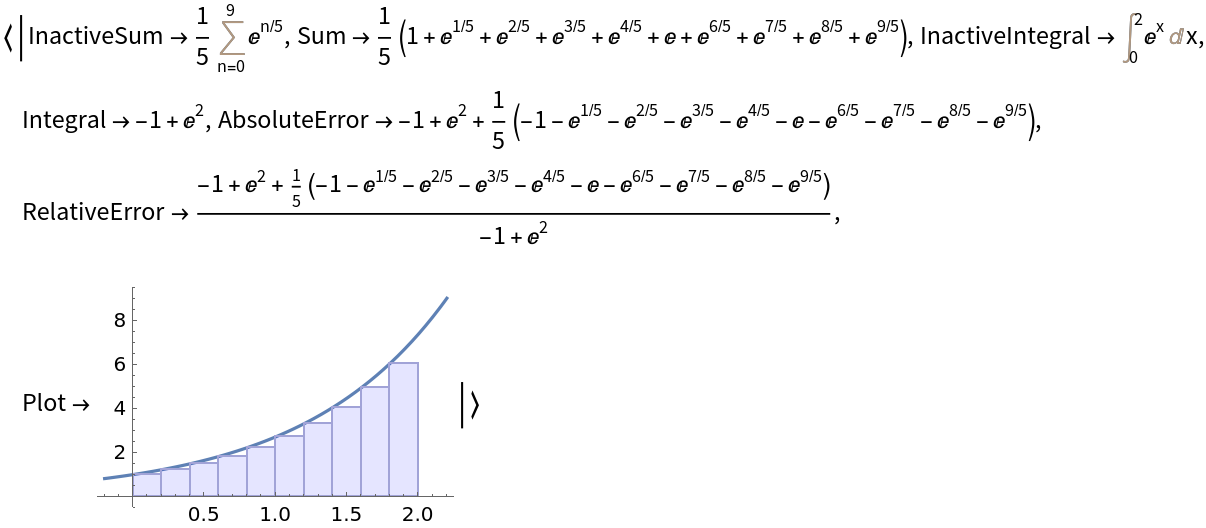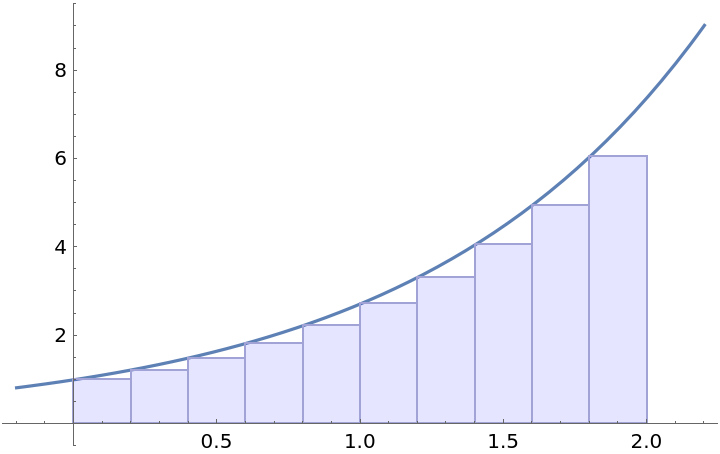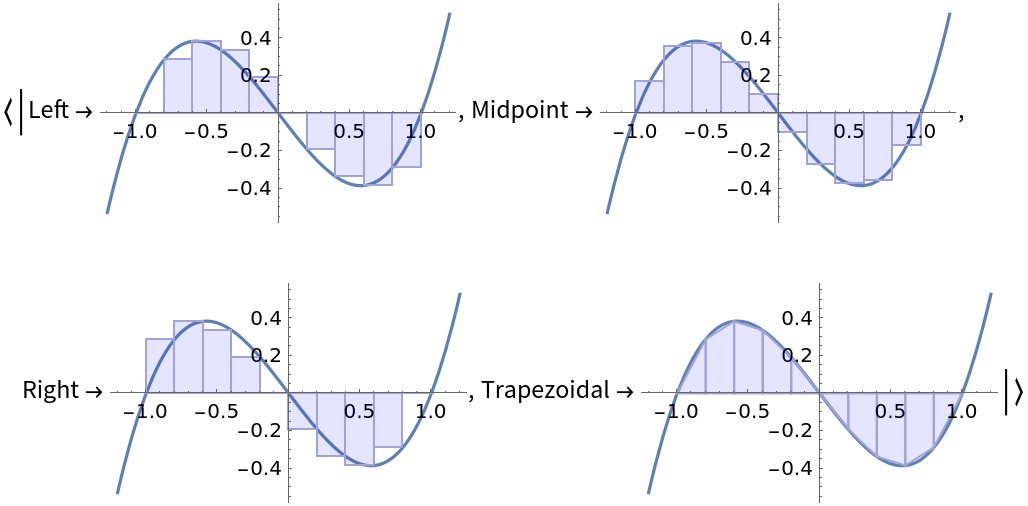Wolfram Function Repository
Instant-use add-on functions for the Wolfram Language
Function Repository Resource:
Compute information related to a Riemann sum
ResourceFunction["RiemannSum"][expr,{x,xmin,xmax,n},m,method] computes an association of data related to the Riemann sum of expr specified by method on the domain xmin<=x<=xmax partitioned into n intervals of equal length. | |
ResourceFunction["RiemannSum"][expr,{x,xmin,xmax,n},m,method,property] computes the information specified by property related to the Riemann sum of expr on the given domain. | |
ResourceFunction["RiemannSum"][expr,{x,xmin,xmax,n},m,All,property] computes the information specified by property for all Riemann sum methods. | |
ResourceFunction["RiemannSum"][expr,{x,xmin,xmax,n},m] computes all properties of the Riemann sum for all methods. |
| "InactiveSum" | inactivated Sum over the input variable m, where the summand is determined by the method and n. |
| "Sum" | activated sum |
| "InactiveIntegral" | inactivated integral that the given Riemann sum approximates |
| "Integral" | actual value of the integral |
| "AbsoluteError" | absolute error between the integral value and the sum value |
| "RelativeError" | relative error between the integral value and the sum value |
| "Plot" | plot showing the curve and the areas that are computed as the terms of the Riemann sum |
| Dataset | formatted output of all properties as a Dataset |
Compute information related to a left Riemann sum:
| In[1]:= |
| Out[1]= |  |
Alternatively, compute just a particular property:
| In[2]:= |
| Out[2]= |  |
For easy comparison, return only a particular property for all four methods:
| In[3]:= |
| Out[3]= |  |
Check that in this special case, all four methods return the same result:
| In[4]:= |
| Out[4]= |
RiemannSum can also compute with a symbolic number of intervals:
| In[5]:= |
| Out[5]= |  |
Compute the limiting behavior of the sum as the number of intervals goes to infinity:
| In[6]:= |
| Out[6]= |
Show that this matches the actual value of the definite integral:
| In[7]:= |
| Out[7]= |
Show that in the finite case, the four methods may return differently:
| In[8]:= |
| Out[8]= |
This can be seen symbolically as well:
| In[9]:= |
| Out[9]= |  |
But in the limit, they are equivalent, and are equivalent to computing the definite integral:
| In[10]:= |
| Out[10]= |
| In[11]:= | ![integral = ResourceFunction[
"RiemannSum", ResourceSystemBase -> "https://www.wolframcloud.com/obj/resourcesystem/api/1.0"][x^3, {x, 0, 1, m}, n, "Left", "Integral"];
AllTrue[Values[limits], # == integral &]](https://www.wolframcloud.com/obj/resourcesystem/images/650/650f03e7-f7d9-44ec-927d-0f690b46285e/1d19df0549eaf487.png) |
| Out[11]= |
For a given curve, one of the "Left", "Right", "Midpoint" or "Trapezoidal" Riemann sums will be the best approximation for the definite integral:
| In[12]:= |
| Out[12]= |
| In[13]:= |
| Out[13]= |
For curves that are concave up, the "Left" method will under-approximate the definite integral, while the "Right" and "Trapezoidal" methods will over-approximate:
| In[14]:= |
| Out[14]= |
| In[15]:= |
| Out[15]= |
This work is licensed under a Creative Commons Attribution 4.0 International License